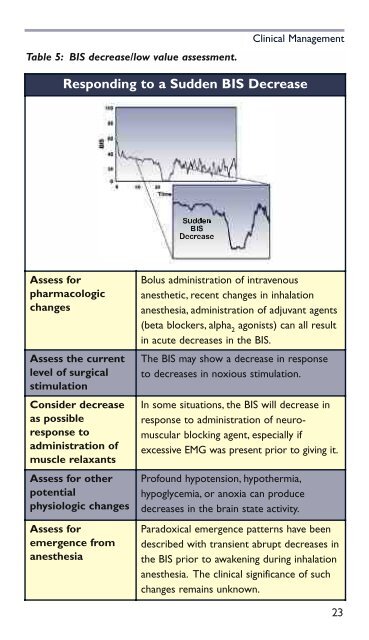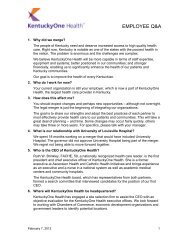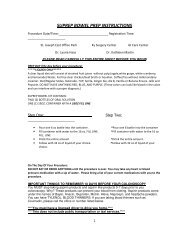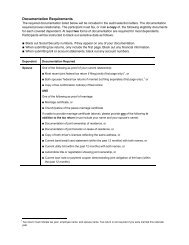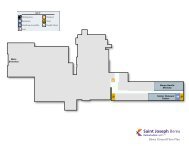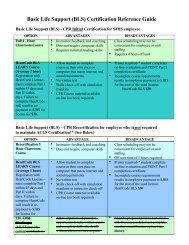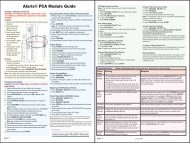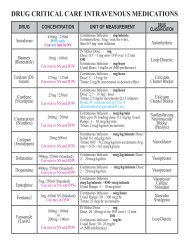BIS guide for clinicians
BIS guide for clinicians
BIS guide for clinicians
Create successful ePaper yourself
Turn your PDF publications into a flip-book with our unique Google optimized e-Paper software.
Table 5: <strong>BIS</strong> decrease/low value assessment.<br />
Clinical Management<br />
Responding to a Sudden <strong>BIS</strong> Decrease<br />
Assess <strong>for</strong><br />
pharmacologic<br />
changes<br />
Assess the current<br />
level of surgical<br />
stimulation<br />
Consider decrease<br />
as possible<br />
response to<br />
administration of<br />
muscle relaxants<br />
Assess <strong>for</strong> other<br />
potential<br />
physiologic changes<br />
Assess <strong>for</strong><br />
emergence from<br />
anesthesia<br />
Bolus administration of intravenous<br />
anesthetic, recent changes in inhalation<br />
anesthesia, administration of adjuvant agents<br />
(beta blockers, alpha 2<br />
agonists) can all result<br />
in acute decreases in the <strong>BIS</strong>.<br />
The <strong>BIS</strong> may show a decrease in response<br />
to decreases in noxious stimulation.<br />
In some situations, the <strong>BIS</strong> will decrease in<br />
response to administration of neuromuscular<br />
blocking agent, especially if<br />
excessive EMG was present prior to giving it.<br />
Profound hypotension, hypothermia,<br />
hypoglycemia, or anoxia can produce<br />
decreases in the brain state activity.<br />
Paradoxical emergence patterns have been<br />
described with transient abrupt decreases in<br />
the <strong>BIS</strong> prior to awakening during inhalation<br />
anesthesia. The clinical significance of such<br />
changes remains unknown.<br />
23


